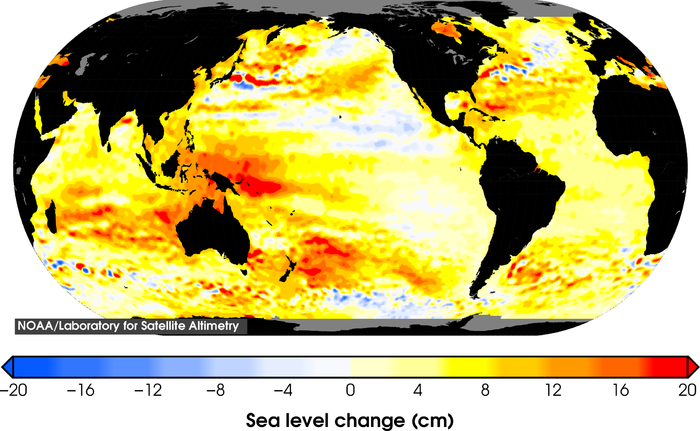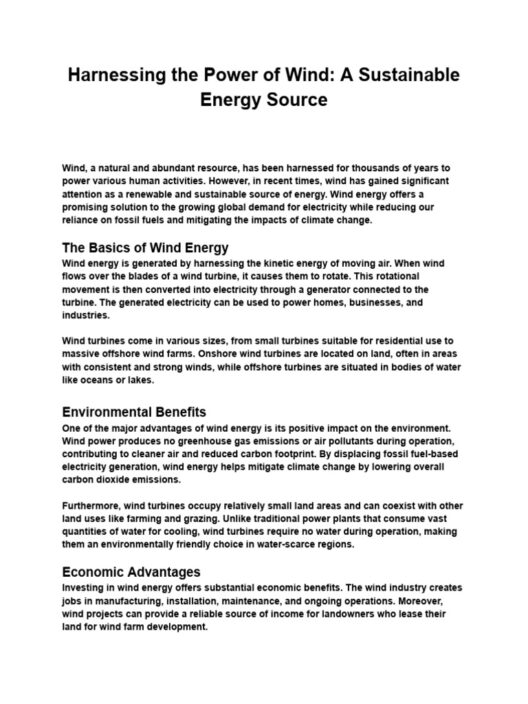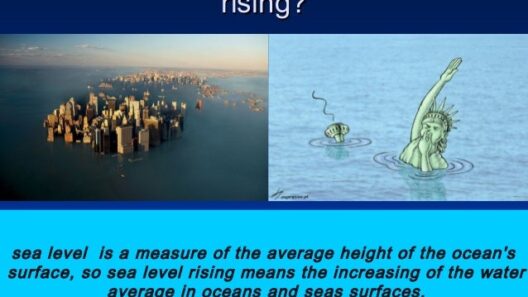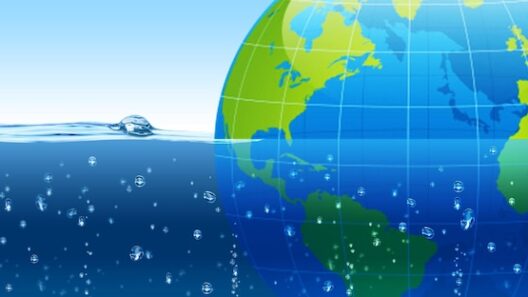As climate change accelerates, a pressing concern for coastal communities and ecosystems is the increase in sea levels. Understanding the mechanisms behind this phenomenon and its implications is paramount for stakeholders ranging from policymakers to property owners. The annual increase in ocean levels is a clear signal of the broader environmental shifts occurring on our planet.
Sea level rise is primarily driven by two factors: thermal expansion of seawater as it warms and the influx of water from melting ice sheets and glaciers. The consequences of rising sea levels are profound and multifaceted, impacting infrastructure, wildlife habitats, and human livelihoods. Therefore, grasping the ongoing trends is essential for mitigation and adaptation strategies.
Determining the rate of sea level rise provides insights into these ongoing shifts, specifically how much ocean levels rise each year and what that means for our future.
Understanding Annual Sea Level Changes
The annual increase in sea level varies, but recent data indicate that global sea levels have risen approximately 3.3 millimeters per year since the 1990s. However, this figure can fluctuate based on geographic location and the various factors influencing local and regional sea levels.
For instance, areas experiencing significant land subsidence, such as New Orleans or parts of the Pacific Islands, may witness more pronounced increases in sea levels than the global average. Conversely, regions that are experiencing uplift, such as parts of Scandinavia, may have a slower rate of increase. Therefore, it’s crucial to contextualize sea level changes within specific geographic settings to understand their full implications.
Factors Contributing to Rising Sea Levels
The warming of the Earth’s atmosphere is predominantly caused by anthropogenic emissions of greenhouse gases. As temperatures rise, polar ice caps and glaciers are melting at an accelerating pace. The Greenland and Antarctic ice sheets have been losing mass rapidly, contributing to an increase in global sea levels. It is estimated that these ice losses account for roughly one-third of the annual rise in sea levels.
In addition to ice melt, thermal expansion plays a significant role in sea level rise. The oceans absorb approximately 90% of the excess heat generated by climate change. As water warms, it expands, taking up more volume and effectively elevating sea levels. This phenomenon is consistent across various oceanic regions, though impacts may differ in local contexts.
Moreover, changing precipitation patterns and groundwater depletion can also affect sea levels. Increased rainfall can lead to surface runoff, which temporarily raises sea levels, whereas groundwater extraction can cause land to sink in certain areas, exacerbating perceived sea level rises. These localized dynamics make the monitoring of sea level rise even more complex.
The Impacts of Sea Level Rise
The ramifications of rising sea levels are extensive and critical. Coastal flooding is perhaps the most evident consequence. As average sea levels creep higher, storm surges from hurricanes and other severe weather events become more devastating. Areas once protected from flooding are now at greater risk, endangering homes, businesses, and critical infrastructure.
Moreover, saltwater intrusion poses a significant threat to groundwater supplies, which millions rely upon for drinking water and irrigation. The encroachment of sea salt into freshwater aquifers can lead to contamination, posing serious challenges for agricultural and urban communities alike.
Biodiversity is also at risk due to shifting coastal ecosystems. Mangroves, estuaries, and coral reefs are vital for numerous species and provide natural barriers against floods. As sea levels rise, these ecosystems face destruction, which, in turn, affects marine biodiversity and the livelihoods of those who rely on these resources for survival.
Long-Term Projections and Adaptation Strategies
The Intergovernmental Panel on Climate Change (IPCC) projects that if current trends continue, global sea levels could rise between 0.3 to 1.2 meters by the year 2100. This range depends significantly on global greenhouse gas emissions and the resultant global temperature rise. Adaptation strategies, from enhancing flood defenses to rethinking coastal development, will be critical for mitigating the impacts of rising sea levels.
Coastal cities are beginning to invest in resilience infrastructure, such as sea walls and drainage improvements, to combat potential flooding. Additionally, some regions are reassessing land use policies to ensure that development accounts for anticipated changes in sea levels, minimizing risks to human activity and ecosystems.
In Conclusion
Understanding how much sea levels are rising each year is crucial for preparing for the inevitable changes to our planet’s coastlines and ecosystems. The complex interplay of thermal expansion, ice melt, and local dynamics necessitates a comprehensive approach to both research and policy-making. As the effects of climate change become increasingly evident, a proactive stance on sea level rise will be essential for safeguarding our communities and the environments upon which we depend.







